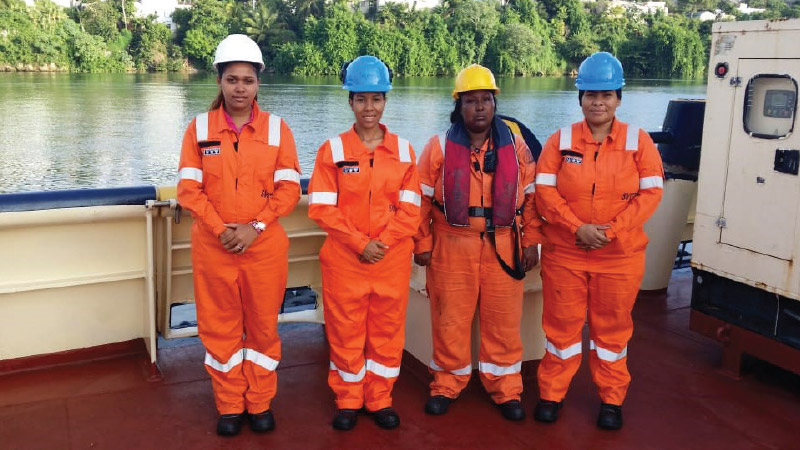By Mike Jarrett
It was a moment in history that was bound to be, when superstition and folly about women on board gave way to a time when women piloted ships and performed tasks that were hitherto considered by men to be too much for the ‘fair and gentle’. Yet even as that new era arrived, women hold only about one in every fifty jobs in the world’s sea-going workforce.
The International Transport Worker’s Federation (ITF) says: “It’s still rare to find women workers at sea but, largely thanks to trade unions, more women are confronting prejudice and becoming valuable crewmembers.”
ITF, an international trade union federation of transport workers’ unions, estimates that women make up about 2% of the world Maritime’s taskforce, working mainly in the cruise and ferries sub-sectors.
2% of anything is, relatively to the whole, small. However, in the ITF, this amounts to 23,000 women holding membership in its member-unions worldwide, not a small number by any means – just miniscule in the context of potential.
Women have faced discrimination in getting seafaring work. In some countries, the ITF reports, women are barred from enrolling in nautical courses offered by maritime education and training institutions. As well, women tend to enroll in navigation rather than engineering courses.
Even once trained, they may have to face prejudice from ship owners who won’t employ women, the ITF notes on its website. It was in this historical context that Svitzer Caribbean moved to empower its women.
The company’s 70-ton bollar pull ASD tug, Monte Cristi, operating in the ports of Rio Haina and Caucedo in the Dominican Republic, now has an all-female crew and Capt. Dickson Rivas, its General Manager, is said to be the catalyst for this initiative.
The initiative in the Dominican Republic started some two years ago when Captain Eduard Medina began training the first group of female crew. Soon, the company had its first female captain, Captain Maria De Los Santos.
The initial training included basic seamanship; safety awareness and knowledge, stability and navigation.
“It’s a demanding education and you have to work hard, regardless of gender,” said Captain De Los Santos. “As a woman in this line of work, you really decide yourself what obstacles you have to face – it’s all about how you face challenges and how hard you work to overcome them.”
“The best aspect of the job is receiving positive comments from the Pilot and the vessel Captain on completion of a tug job. I like seeing how the crew members light up, knowing they’ve achieved what was set out – their professional pride, basically.”
Deckhand Maria Martinez thinks that despite the fact that her job demands a bit of physical strength, it is not something that other women cannot do. She thinks a trained deckhand, regardless of gender, can easily handle it.
When asked the same question about physical demands of working on such a powerful tug, Chief Engineer Marysabel Moreno, answered: “I think many things that we presume need to be done with physical strength actually only require technical intelligence and the right tools. If you don’t have the right tools at hand, it is useless to have physical strength.”
This crew has been operating the Svitzer Monte Cristi for the last four months.

